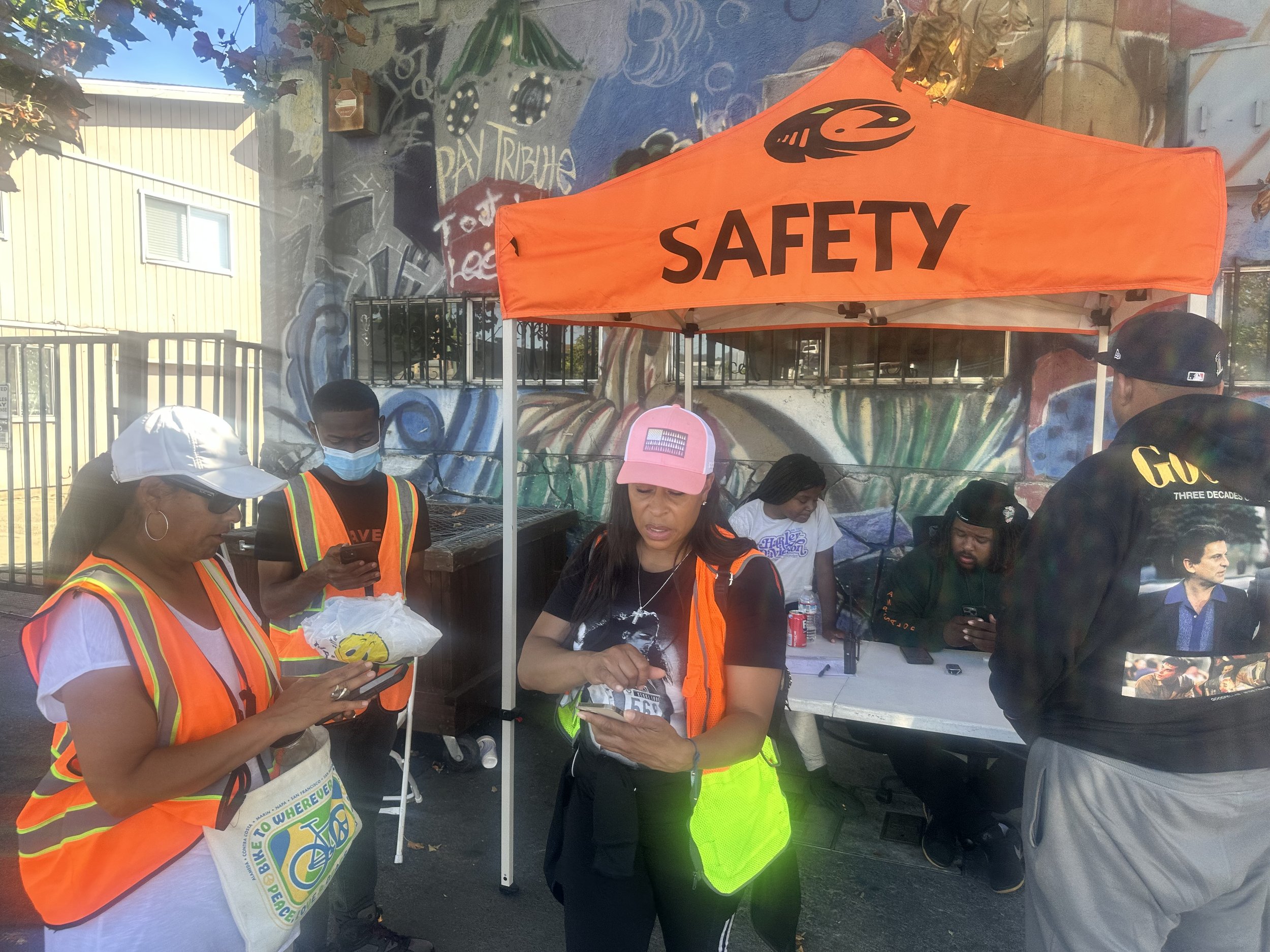Walking Ambassadors For a Safer, Cleaner East Oakland
Yvette Baldares, a safety ambassador with the Black Cultural Zone, stood in her fluorescent orange vest on a busy Hegenberger Road in East Oakland, pointed across the eight-lane thoroughfare that buzzed with cars, and absolutely loved what she saw across the street.
She’d walked this stretch of business office parks, gas stations, and hotels the previous week with her fellow ambassadors and had snapped pictures of mounds of illegal dumping tucked in the brush – blight that goes unreported as drivers speed past it on their way to-and-from the Oakland airport.
But now, a team of yellow-vested workers from the fellow non-profit Beautification Council had received the photos and were bagging up the trash, trimming back overgrown trees and dead ivy to bring new life to the roadway.
Baldares smiled – it felt like she had done her small part in the newly coordinated effort to improve Hegenberger Road, the “gateway to Oakland.”
“I know we can’t solve Oakland’s big problems all at once, but I know I can help change things in smaller ways,” Baldares said. “I like being a part of something that’s making our community better. I like being out here, helping to change the narrative of Oakland, just one person at a time.”
Baldares is just one of Black Cultural Zone’s growing team of paid safety ambassadors who walk Hegenberger Road as well as the International Blvd commercial corridor every Friday and Saturday from 60th Ave to 100th Ave.
They document debris piles and abandon cars, help connect those experiencing homelessness to housing options, chat up small business owners, and serve as the community bond between East Oakland residents and the services they need. As the program grows, ambassadors will be trained in first aid and how to support people experiencing distress and connect them to mental health services.
The additional “eyes and ears” on the streets have been well received by local business owners, who tell the ambassadors their presence often makes them feel safer.
“We got asked if we were cops a lot at first,” Baldares said, after she began the ambassador walks in 2023. “It took some time for people to get to know us, and see that we’re from the community and of the community, but once they did – man, people are grateful to see us.”
Funding for safety ambassadors got a significant boost in March from the City of Oakland through a $2 million grant from the State of California, and it would see a larger, even more sustainable increase directly into East Oakland through the Rise East initiative.
Rise East is a collaborative effort guided by a 10-Year Plan. It brings together neighborhood nonprofits like the Black Cultural Zone, government, and the private sector to transform Deep East Oakland. Its mission is to make lasting improvements for Black children and families right now, but also long into the future. To do that, Rise East is raising $50 million this year to unlock a $50 million match – which can help fund more safety ambassadors like Baldares.
“‘Community keeping community safe’ is a model that invests in community members here in East Oakland,” said Carolyn “CJ” Johnson, CEO of the Black Cultural Zone. “To become safety ambassadors in the very neighborhood they live in, conduct outreach, offer creative problem solving, and connect residents and local businesses to resources is a worthy endeavor that benefits all Oaklanders.”
Jay Lacey, 21, an East Oakland resident, said he joined the ambassador program after his mother heard about a unique job opportunity – a chance to serve his community and earn money.
“It feels good to help residents and get them the information they need,” Lacey said. “Sometimes it’s like we’re the first person who asked if they needed help with something.”
On a recent Saturday afternoon, Baldares and Lacey were walking along the International Blvd commercial corridor when they heard a loud voice shout toward them, “Thank you!”
They looked around but did not see anyone and thought to keep walking until they noticed a car mechanic slide out from beneath a vehicle at their feet.
The small business owner took a minute to thank them, and shared that he’d seen a visible improvement on the streets around his shop – the illegal dumping seemed to get picked up quicker, the graffiti painted faster, and the streets overall felt safer.
Even if there was plenty of work to do – and more walks to conduct – Baldares said the exchange was another metric that proved to her ambassadors can make small differences that lead to greater changes.
“We’re all connected out here even if we don’t know it,” Baldares said. “We all see the same problems in front of us, but we can all be part of the solution too.”



